Things We Say in Alabama, Climate Change, and More

Notes from Munger are President Daniel Coleman‘s monthly letters to the Birmingham-Southern College community.
October 1, 2019
For those of you who have taken my classes, I am sure you are familiar with the experience I am about to describe: Sometimes you get tired of focusing and just look out the window and let your mind wander.
The other day, after I received data from the student census, I was thinking about the fact that 62 percent of this year’s student body is from Alabama. This percentage is a little larger than the average over recent history. Most college presidents would probably be thinking, “How can we add to our geographical diversity?” That thought entered my head for about a second, and then I looked out the window, and my mind began to wander.
I thought about how we have more students than most who know the meaning of the meteorological term “The devil is beating his wife.” (It means it’s raining while the sun is shining.) I used this term a few years ago in front of people from other parts of the South who thought I was insane. So I did some research and found an AL.com article about a linguist named Joshua Katz from North Carolina State University who has mapped this expression to ONLY Alabama and some parts of Mississippi. Who knew language could still be so local?
More research revealed that this expression likely comes from the French as “The devil is beating his wife and marrying his daughter.” (Theidioms.com).
With a little more research (if you can call looking at Wikipedia research), I found that every culture seems to have a strange expression for this phenomenon:
In Pakistan (Punjab), they say: “Kani gidh Da waye” or “one eye jackal’s wedding”.
In Sudan, they say: “The donkey and monkey are getting married.”
In Bulgaria, they say: “The bear is getting married.”
After wasting about 20 minutes thinking about this expression, I started thinking about how hot it is outside. I think it has been over 90 degrees every day in September. I don’t recall ever experiencing a September like this. And then my thoughts wandered to a relevant meteorological expression, “Indian Summer.” Doing a little more “research” (again Wikipedia), this expression has likely been around since the 18th century if not before.
“It was first noted in regions inhabited by Native Americans (“Indians”), or because the Native Americans first described it to Europeans, or it had been based on the warm and hazy conditions in autumn when Native Americans hunted.”(“Hints of an Indian Summer” BBC. Retrieved September 19, 2015.)
Then my mind wandered to when I worked at UBS about 15 years ago and traveled to Hyderabad every year to meet with a team of technologists and analysts who worked in my division. Every time I was in Hyderabad, the high temperature of the day exceeded 110 degrees Fahrenheit. “Indian Summer” is appropriately named.
This mind-wandering all leads me to one of the great topics of the day, “global warming” or “climate change.” Whatever your current views are on this topic, I would like to highlight it for two reasons. First, it is likely to become one of the most important topics of public discourse over the coming decades. Second, I would like to share with you a framework on how to think about it.
The Paris Climate Accord was signed by 184 states and the EU, although one of those states (the United States) has announced that it is backing out. According to a March 2019 Gallup Poll, 66 percent of Americans believe that global warming is caused by human activities.
Regardless of how you view climate change, there is a high likelihood there will be policies enacted over the next decade that will impact you. As you think about how to vote, climate change policies should impact your decision. And as you think about your career and perhaps even the place where you want to live, the impact of future policies (if not climate change itself) should enter into your equation. I recommend that all of you study the current evidence not just of climate change, but of the likely policies that will be enacted.
As far as climate change itself goes, consider the following: Climate scientists have not done themselves any favors by creating hundreds of models that made predictions 10 to 20 years ago that have not thus far come true. (See the September 21 edition of The Economist). What is worse, some scientists will pick a single model that did predict today’s conditions and argue that it was correct as evidence that the climate is changing. Just because one of hundreds of models is accurate ex post does not mean that it has any predictability ex ante. The fact is that the climate of the world is an incredibly complex ecosystem that is very hard to predict with any precision (especially where precision is measured in years as opposed to decades).
I have spent much of my career working with data scientists to predict risk and residual returns in financial markets. To create models, we used data over a time frame to detect patterns and trends. We would then run our models over different time frames (that had already occurred) to see if we could predict these patterns and trends (out of sample testing). If this was successful, we would try the models out in “production” or the actual live market and see if they worked, to see if we made money in a way we expected.
Even for those models that showed promise in sample testing, very few worked in the real market. From my point of view, the climate of the earth is a lot more complicated than financial markets. It is very hard to imagine that there is a climate model that we can be confident in over the next five to 10 years. Does that mean we should ignore them? Absolutely not. Modeling is part of the process of critical thinking bringing us closer to the truth. But with really complex models, there will always be ambiguity.
When thinking about climate change, I recommend taking a step back. What is the fundamental scientific claim behind the belief that human beings are changing the climate of the world? It’s “The Greenhouse Effect.” While this term goes back to the early 19th century, I believe that in terms of climate change it goes back about 50 years. In fact, I recall writing a paper on it in my ninth grade Physical Sciences class in 1979.
In a greenhouse, sunlight shines in, warming everything inside including the air, but because of the glass, the warm air cannot escape, causing the temperature inside to rise. All you have to do is come to my office on a hot day when the air conditioning is out in Munger to know that this effect is real.
What else do we know is true? We know that through the burning of fossil fuels, we are increasing the carbon in the atmosphere. Moreover, we can measure this increase. We also know that carbon as well as methane and other gases will cause the atmosphere to trap heat. We just have to look to Venus to see this impact given that its atmosphere is primarily made up of carbon dioxide.
What else do we know? We definitely know that many of the great glaciers around the world, in particular in Antarctica, are melting in ways we have not seen before.
My advice to all of you is focus on what you know for sure and then try to use logic, models, and reason to draw your own conclusions. As you talk to your friends, debate, and look at the evidence, I would like to leave you with a few thoughts.
Former Secretary of State (and former Chairman of the Joint Chiefs of Staff) Gen. Colin Powell once said that to act, you need between 30 percent and 70 percent of the relevant information. If you didn’t have 30 percent, you didn’t have enough. Acting was too risky. If you waited until you had more than 70 percent, you probably waited too long.
The question on climate change might be: Do we have 30 percent of the information needed? Or have we waited too long to prevent significant problems for the earth’s environment?
Not much in nature is linear. An eco-system like the earth’s climate interacts with itself, as does a financial market. A significant change to one part of an eco-system does not necessarily mean that we will have a commensurate reaction. We see many different “functions” in nature other than a straight line.
In nature, we often see Fibonacci spirals where growth starts small and then gets bigger and bigger. We also frequently see exponential curves as the slope of change continuously steepens. My point is that human beings tend to think linearly, but nature does not behave that way.
As you assess the potential impact of something like climate change, don’t restrict your thoughts to a linear deterioration of the environment. It could be smaller or it could be much, much bigger.
October 14, 2019
Whew. I wrote the above when I was dying from the heat. Good thing that problem is behind us! (Or is it? You never can tell what autumn in the South will bring.)
A quick shout-out to BSC Football, now tied for second in the conference, for keeping the Wesley Cup in its appropriate home; to Women’s Volleyball, who upset No. 6 Berry College Saturday to remain tied for first place; and to Women’s Soccer, now in second place.
Another shout-out goes to the cast and everyone involved in the BSC Theatre production of “The Complete Works of William Shakespeare (Abridged).” My 14-year-old daughter came with rolling eyes and negative enthusiasm, expecting to be bored out of her mind watching some avant-garde adaptation of the Bard. Her smile and laughter could not be repressed. She still laughs talking about the different scenes. It was a fabulous production. And I was very grateful that I was not called on to the stage.
As you read this, you have just returned from fall break. The summer is finally over. Your mid-terms are behind you, and Homecoming is a just a few days away.
It feels like a good time to have a good time.
Daniel
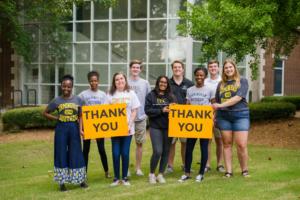
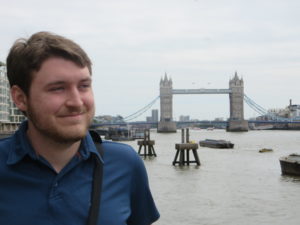

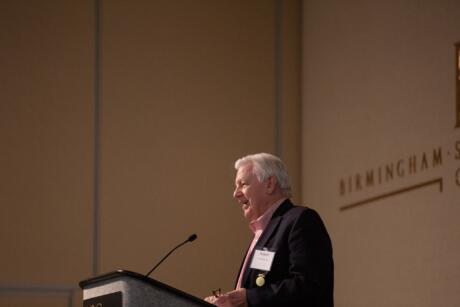

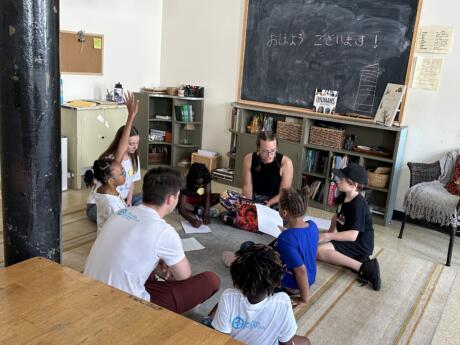

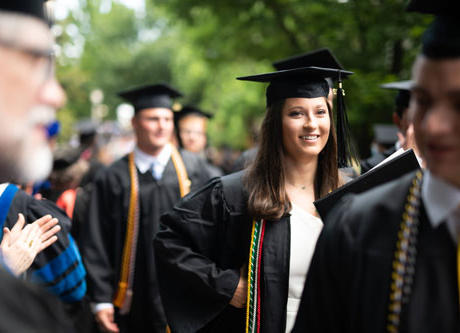


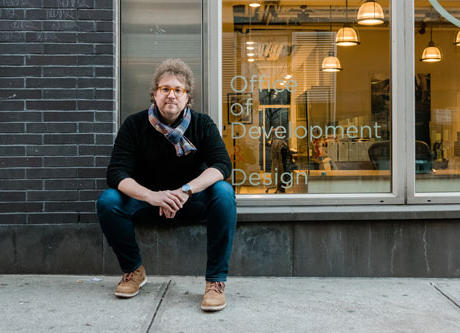
// Comments are closed //